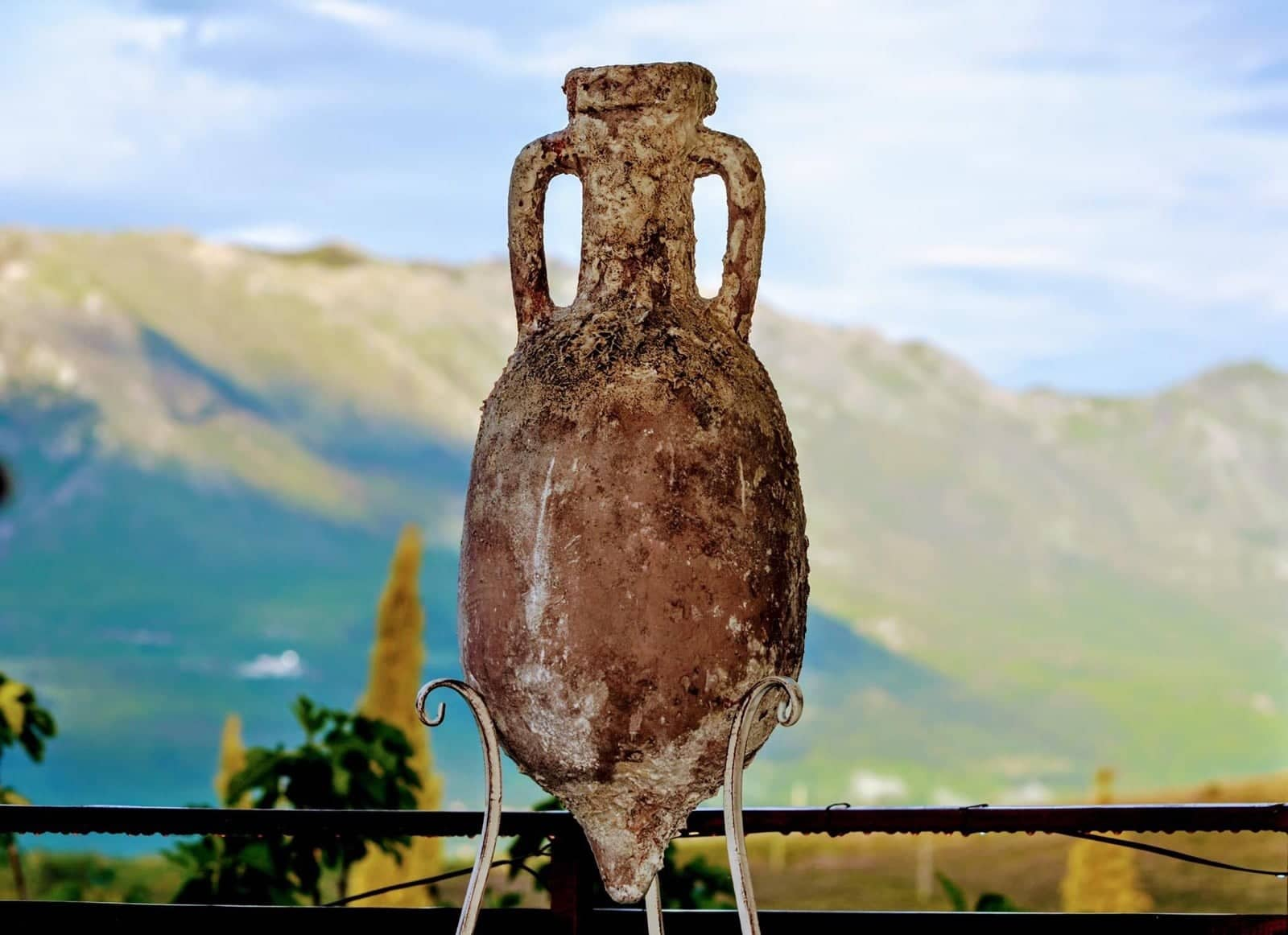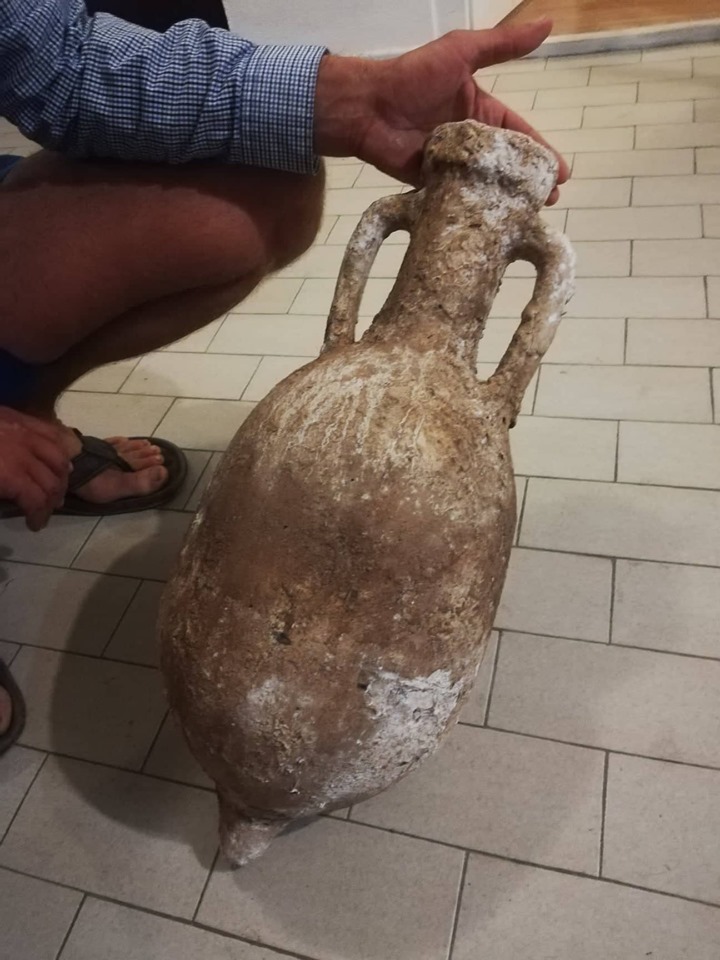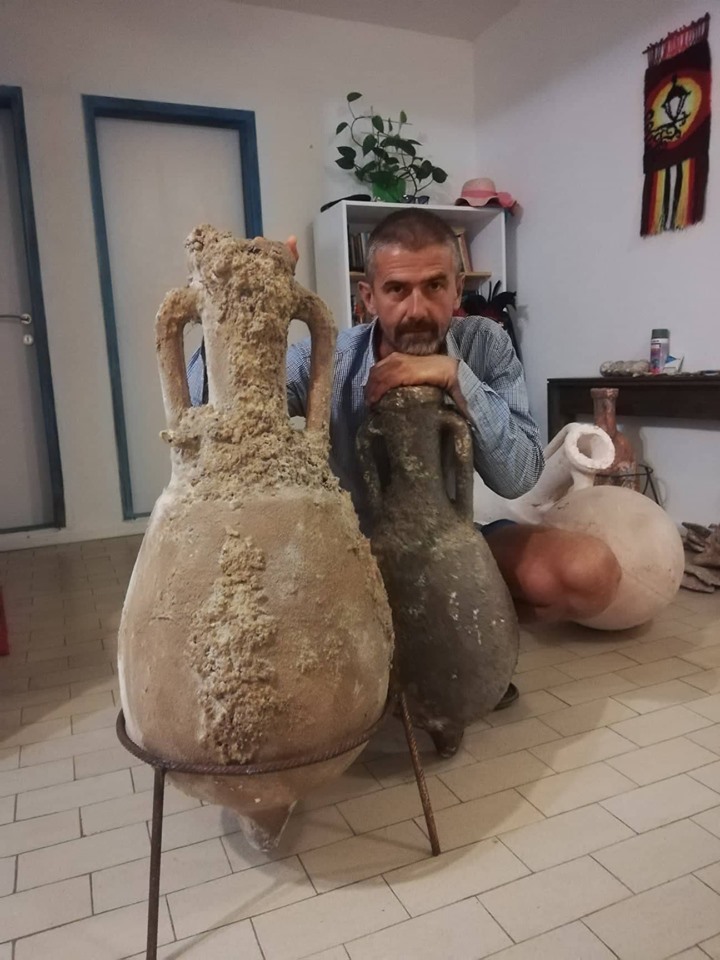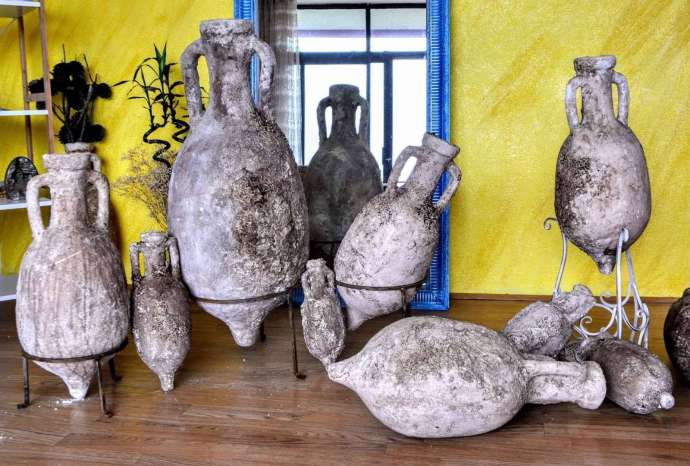August 27, 2020 - In the rich and layered cultural heritage of the Montenegrin coast, many amphorae, ancient vessels for transport and storage of various raw materials and goods have, due to shipwrecks and conflicts at sea, ended up on the seabed. These have lain in the sand in some locations for more than two thousand years, yet instead of being an underwater attraction, most of this segment of Montenegro's archeological treasure has been removed in recent decades and ended up in private collections on the black market.
You can see these ancient dishes in museums along the bay. And if you want to buy amphorae, it won't be easy as in the early nineties. However recently, those interested in such artefacts in Boka can get their faithful replicas from Timur Trako, an academic sculptor from Bosnia and Herzegovina.
"I fell in love with amphorae. Apart from the figures I primarily deal with, I also found in amphorae motifs and shapes that fascinate me. I took the opportunity to spend time in Boka, so I visited museums to get inspired, then conducted research, and then embarked on the adventure of making amphorae," says Timur, who has been living and working in Radovići, Tivat for the last few months.

Timur plans to start a small atelier in Boka and encourage colleagues to join him in making aphorae replicas, Photo: Private Collection
Trako studied sculpture at the Academy of Fine Arts in Sarajevo. The war years took him to Sweden, where as a sculptor he was mostly engaged in the conservation and restoration of sculptures in the interior and exterior of sacred buildings. Upon returning to Bosnia and Herzegovina, he continued his engagements in similar projects, while his artistic interest was primarily in figures. So, his interest in heritage as a sculptor is not new, and not even in his approach. With as much attention as he pays to the restoration of the relief of the old masters, with equal dedication in the making of amphorae, he tries to investigate in detail the original forms and proportions of the ancient vessels.
At first glance, the amphora does not seem like a big challenge for an academic sculptor. However, if the artist's goal is to faithfully convey the form and proportions of some of the types of amphorae made at the end of the Old or the beginning of the New Era, approaching such work involves detailed research and studies to achieve the skill and artistic mastery of the old masters.
"When I became interested in amphorae, I first tried to solve them as a puzzle in my own way. However, something was missing. Then I dived into the books and available museum exhibits, to find out the authentic relationships and proportions. I became interested in the amphorae that are present in this area and researched in detail the form "Lamboggia II," which is the most common model of amphorae found along the coasts of Croatia and Montenegro. It dates from the first century BC and lasted a long time. It has a strong, aesthetically pleasing shape, and as we know, amphorae are also very functional. The form of their bottom is not accidentally round, but very thoughtfully designed. With its shape, this model of amphora reminds me of a female figure. It has a neck, has handles, has shoulders, has a head, has a leg. Why the round shape of the bottom of the amphora? The stored matter is better preserved in such a form than in containers with a flat bottom. Therefore, the ancient peoples did not accidentally make courts for the transfer and storage of goods - amphorae, in a ball shape."

Photo by Antonela Stjepčević
Timur Trako points out that ancient peoples paid a lot of attention to the design of space and objects. They researched design for functional purposes, but it was also important to them to decorate the environment in which they live. Thus, the amphora, in addition to being practical, also had aesthetic value. It resembles a human figure, and in fact, it is in proportions tailored to man.
"I am still researching certain forms of amphorae, intending to meet the challenge of making faithful replicas of all forms of amphorae that can be found along the eastern Adriatic coast. These amphorae of mine are not just replicas. When they ask me if it is the original, I say that my amphora is an original, not made in Antiquity, but today," explains Timur, who says that he has no problem placing his works on the market.

Timur Trako and his amphora, Photo by Antonela Stjepčević
In addition to their original shape, weight, and volume, Timur also adds to his amphorae the patina of time, skillfully simulating nature's influence on objects that lie under the sea for hundreds, sometimes thousands of years.
"I can boast that this is a unique project in the Eastern Adriatic. As far as I know, they do something comparable in Petrinja near Zagreb, but more as souvenirs because they do not approach amphorae studiously and in this way. I plan to start a small workshop here in Montenegro, where we will make amphorae. The idea is to be joined by some more people, who are ready to carry out research so that our studio's purpose would not only be making amphorae but also detailed research into the whole art of their creation," says Timur Trako.
He believes that such an approach to the heritage of Boka Kotorska and Montenegro will facilitate the creation new values based on ancestry, considering the story of amphorae and amphora workshops exciting also in the context of tourism.








